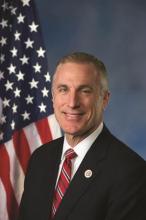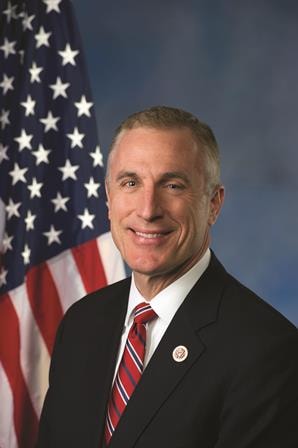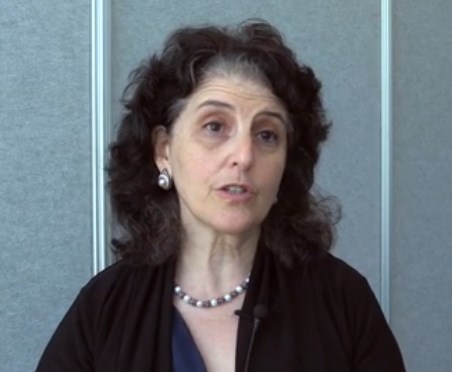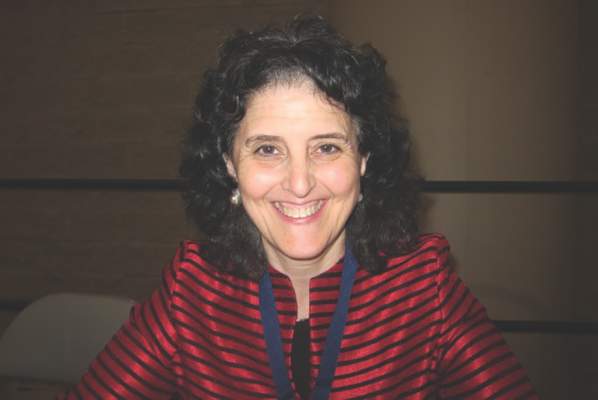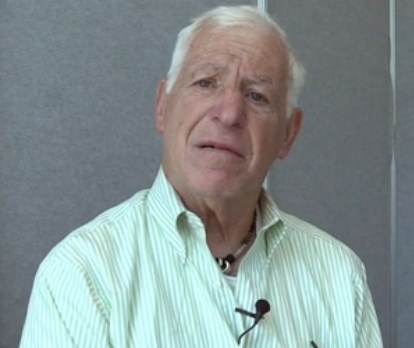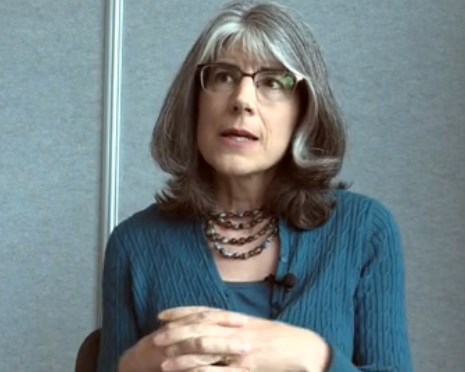User login
House passes IPAB repeal bill
WASHINGTON – House Republicans have made good on their promise to kill the Independent Payment Advisory Board with the passage on June 23 of H.R. 1190, the Protecting Seniors’ Access to Medicare Act of 2015. The vote was 244-154 and fell mostly along party lines.
Many physician organizations, including the American Medical Association, have opposed the IPAB from the very beginnings of the Affordable Care Act. The panel has never been convened, and since Congress has never appropriated funds for the IPAB, the new legislation has no practical impact on practicing physicians.
According to Dr. Kavita Patel, health policy analyst at the Brookings Institution, the IPAB was designed as an objective, appointed commission to make direct recommendations that would become law if Medicare spending exceeded a certain target. Congress could overturn any IPAB legislation with a supermajority vote, Dr. Patel said in an interview.
Opponents of the IPAB, including House Ways and Means Committee Chairman Paul Ryan (R-Wis.), have criticized it as an approach to cost containment, since the panel’s decisions would not require ratification by Congress.
“This unelected panel exists only to take control away from patients and rations care – and it’s seniors who will suffer the consequences,” Rep. Ryan said in a statement.
In the Senate, the bill is known as S.141. It has been referred to the Finance Committee but no action had been taken at press time.
On Twitter @whitneymcknight
WASHINGTON – House Republicans have made good on their promise to kill the Independent Payment Advisory Board with the passage on June 23 of H.R. 1190, the Protecting Seniors’ Access to Medicare Act of 2015. The vote was 244-154 and fell mostly along party lines.
Many physician organizations, including the American Medical Association, have opposed the IPAB from the very beginnings of the Affordable Care Act. The panel has never been convened, and since Congress has never appropriated funds for the IPAB, the new legislation has no practical impact on practicing physicians.
According to Dr. Kavita Patel, health policy analyst at the Brookings Institution, the IPAB was designed as an objective, appointed commission to make direct recommendations that would become law if Medicare spending exceeded a certain target. Congress could overturn any IPAB legislation with a supermajority vote, Dr. Patel said in an interview.
Opponents of the IPAB, including House Ways and Means Committee Chairman Paul Ryan (R-Wis.), have criticized it as an approach to cost containment, since the panel’s decisions would not require ratification by Congress.
“This unelected panel exists only to take control away from patients and rations care – and it’s seniors who will suffer the consequences,” Rep. Ryan said in a statement.
In the Senate, the bill is known as S.141. It has been referred to the Finance Committee but no action had been taken at press time.
On Twitter @whitneymcknight
WASHINGTON – House Republicans have made good on their promise to kill the Independent Payment Advisory Board with the passage on June 23 of H.R. 1190, the Protecting Seniors’ Access to Medicare Act of 2015. The vote was 244-154 and fell mostly along party lines.
Many physician organizations, including the American Medical Association, have opposed the IPAB from the very beginnings of the Affordable Care Act. The panel has never been convened, and since Congress has never appropriated funds for the IPAB, the new legislation has no practical impact on practicing physicians.
According to Dr. Kavita Patel, health policy analyst at the Brookings Institution, the IPAB was designed as an objective, appointed commission to make direct recommendations that would become law if Medicare spending exceeded a certain target. Congress could overturn any IPAB legislation with a supermajority vote, Dr. Patel said in an interview.
Opponents of the IPAB, including House Ways and Means Committee Chairman Paul Ryan (R-Wis.), have criticized it as an approach to cost containment, since the panel’s decisions would not require ratification by Congress.
“This unelected panel exists only to take control away from patients and rations care – and it’s seniors who will suffer the consequences,” Rep. Ryan said in a statement.
In the Senate, the bill is known as S.141. It has been referred to the Finance Committee but no action had been taken at press time.
On Twitter @whitneymcknight
Legislation aims to improve treatment of serious mental illness
WASHINGTON – A new bill sponsored by Rep. Tim Murphy (R-Pa.) aims to improve the treatment of serious mental illness by providing access and assistance to families and caregivers, improving mental health and substance abuse treatment parity, and encouraging evidence-based mental health care.
H.R. 2646, the Helping Families in Mental Health Crisis Act of 2015, also would increase the number of psychiatric hospital beds for those in acute crisis, allocate funds to mental and behavioral health workforce development, and reform oversight of mental health care delivery.
The bill was originally introduced in the last Congress, after the mass shooting in Newtown, Conn. It is based on the findings of a report commissioned by the House Energy & Commerce Committee’s Subcommittee on Oversight & Investigations, which cited high levels of untreated serious mental illness nationwide.
During a June 16 hearing on the bill, Virginia state senator Creigh Deeds, a Democrat, testified about his son’s serious mental illness. Sen. Deeds said that it wasn’t until after his son had stabbed him multiple times, then killed himself, that the senator learned the details of his son’s treatment for bipolar disorder. Those details might have allowed him to successfully intervene and save his son, Sen. Deeds said. The information he did get often came anonymously, he added, due to providers’ fears of violating HIPAA (Health Insurance Portability and Accountability Act).
“HIPAA prevented me from accessing the information I needed to keep him safe and help him towards recovery. Even though I was the one who cared for him, fed him, housed him, transported him, insured him, I was not privy to any information that could clarify for me his behaviors, his treatment plan, and symptoms to be vigilant about,” Sen. Deeds testified. “I was in the dark as I tried to advocate for him in the best way I could with the best information I had.”
H.R. 2646 would amend HIPAA and FERPA (Family Educational Rights and Privacy Act) to allow family members and other caregivers access to diagnoses, treatment plans, and prescribed medications without patient consent. Release of psychotherapy notes would remain prohibited, however.
Meanwhile, patient privacy legislation (H.R. 2690) introduced by Rep. Doris Matsui (D-Calif.) and considered during the same hearing would clarify and strengthen existing language in HIPAA law by amending but not rewriting it. H.R. 2690 would de-escalate the fears of medical personnel surrounding HIPAA, which Rep. Matsui said was appropriately written but not always applied as intended.
Dr. Jeffrey Lieberman*, chair of the psychiatry department at Columbia University, New York, testified that “simply educating doctors” would not be enough to impact how HIPAA-protected information was shared with concerned families because of “the fear of God placed in doctors by personal injury lawyers who often challenge doctors” even when doctors are doing “the common-sense thing to do.”
H.R. 2646 also calls for medical records and mental health records to be integrated. “If a primary care physician doesn’t know that a patient is recovering from an opiate addiction, that provider might misprescribe the patient an opiate and start that patient into a relapse,” Rep. Murphy said in an interview. “Instead of making the files separate but equal, you make them the same. You can’t treat the brain without treating the body.”
The bill also would change the way Medicaid pays for acute care psychiatric services. Currently, under the institutions of mental disease exclusion, federal Medicaid funds can be used for no more than 16 beds in an inpatient psychiatric facility. According to Dr. Lorenzo Norris, director of inpatient psychiatric services at George Washington University Hospital, Washington, D.C., the result is that state-funded facilities often turn away patients experiencing acute mental health crises. H.R. 2646 would lift the 16-bed limit for inpatient stays of 30 days or less.
Such a change would be “huge. It would definitely increase access to services,” Dr. Norris said in an interview. The bill also calls for the elimination of the 190-day lifetime cap on inpatient psychiatric care covered by Medicare.
The overall aim of the bill, according to Rep. Murphy, is to reinforce existing mental health parity laws and to create more integrated evidence-based interventions for mental disorders, especially serious mental illnesses such as schizophrenia or bipolar disorder. The bill would implement primary care– and community health center–based schizophrenia screening and treatment protocols derived from two projects sponsored by the National Institute of Mental Health: the North American Prodrome Longitudinal Study (NAPLS) and the Recovery After Initial Schizophrenia Episode (RAISE) project.
The bill would increase and consolidate federal oversight of mental health care by doing away with the current top job at the Substance Abuse and Mental Health Services Administration and creating an assistant secretary appointed by the Senate to oversee mental health and substance abuse treatment within the Health and Human Services department. Further, the bill stipulates that the position must be held by a psychiatrist or psychologist. The assistant secretary would administer the current SAMHSA. “I don’t want to eliminate SAMHSA, I want to elevate it,” Rep. Murphy said in an interview.
Several key provisions of the bill have been modified since it was introduced in the last Congress. Previously, Rep. Murphy called for eliminating funds for patients-rights groups, saying they were aligned with the “antipsychiatry movement” that would go as far as advocating people with severe mental illness not take their prescribed medications. Instead, H.R. 2646 would restrict funds to groups that investigate patient abuse and neglect only, which Rep. Murphy said would prevent antipsychiatry activists and others from giving dangerous counsel to those who lack insight into their condition.
The new bill has bipartisan support among subcommittee members. “It’s different than we saw last Congress,” Lauren Alfred, policy director for the Kennedy Forum, said in an interview. “Last time it was more about reacting to crisis, this time it’s more about the future. The focus is on what will happen in primary care offices and across the system if comprehensive mental health care reform goes forward.”
Despite that support, there is some dissent.
Rep. Frank Pallone Jr. (D-N.J.), ranking member of the Energy & Commerce Committee, testified that he favors the language on workforce development and parity enforcement but is opposed to predicating community mental health block grant funding on the existence of state treatment standard and assisted outpatient treatment laws, which Rep. Murphy’s proposed legislation would do.
The bill also raised some alarm with references to antiabortion language. Subcommittee member Rep. Jan Schakowsky (D-Ill.) noted that H.R. 2646 would expand existing restrictions on the use of grant funds to pay for abortions by reauthorizing the Garrett Lee Smith Memorial Act, a suicide prevention law. Rep. Murphy dismissed this claim in an interview, noting that to remove the antiabortion language would mean rewriting the existing suicide prevention law. “It’s existing law from a decade ago and we simply reference that whole bill,” he said. “We haven’t changed anything. There’s nothing partisan or sneaky about it.”
On Twitter @whitneymcknight
*Correction, 6/22/2015: An earlier version of this article misstated Dr. Jeffrey Lieberman's name.
WASHINGTON – A new bill sponsored by Rep. Tim Murphy (R-Pa.) aims to improve the treatment of serious mental illness by providing access and assistance to families and caregivers, improving mental health and substance abuse treatment parity, and encouraging evidence-based mental health care.
H.R. 2646, the Helping Families in Mental Health Crisis Act of 2015, also would increase the number of psychiatric hospital beds for those in acute crisis, allocate funds to mental and behavioral health workforce development, and reform oversight of mental health care delivery.
The bill was originally introduced in the last Congress, after the mass shooting in Newtown, Conn. It is based on the findings of a report commissioned by the House Energy & Commerce Committee’s Subcommittee on Oversight & Investigations, which cited high levels of untreated serious mental illness nationwide.
During a June 16 hearing on the bill, Virginia state senator Creigh Deeds, a Democrat, testified about his son’s serious mental illness. Sen. Deeds said that it wasn’t until after his son had stabbed him multiple times, then killed himself, that the senator learned the details of his son’s treatment for bipolar disorder. Those details might have allowed him to successfully intervene and save his son, Sen. Deeds said. The information he did get often came anonymously, he added, due to providers’ fears of violating HIPAA (Health Insurance Portability and Accountability Act).
“HIPAA prevented me from accessing the information I needed to keep him safe and help him towards recovery. Even though I was the one who cared for him, fed him, housed him, transported him, insured him, I was not privy to any information that could clarify for me his behaviors, his treatment plan, and symptoms to be vigilant about,” Sen. Deeds testified. “I was in the dark as I tried to advocate for him in the best way I could with the best information I had.”
H.R. 2646 would amend HIPAA and FERPA (Family Educational Rights and Privacy Act) to allow family members and other caregivers access to diagnoses, treatment plans, and prescribed medications without patient consent. Release of psychotherapy notes would remain prohibited, however.
Meanwhile, patient privacy legislation (H.R. 2690) introduced by Rep. Doris Matsui (D-Calif.) and considered during the same hearing would clarify and strengthen existing language in HIPAA law by amending but not rewriting it. H.R. 2690 would de-escalate the fears of medical personnel surrounding HIPAA, which Rep. Matsui said was appropriately written but not always applied as intended.
Dr. Jeffrey Lieberman*, chair of the psychiatry department at Columbia University, New York, testified that “simply educating doctors” would not be enough to impact how HIPAA-protected information was shared with concerned families because of “the fear of God placed in doctors by personal injury lawyers who often challenge doctors” even when doctors are doing “the common-sense thing to do.”
H.R. 2646 also calls for medical records and mental health records to be integrated. “If a primary care physician doesn’t know that a patient is recovering from an opiate addiction, that provider might misprescribe the patient an opiate and start that patient into a relapse,” Rep. Murphy said in an interview. “Instead of making the files separate but equal, you make them the same. You can’t treat the brain without treating the body.”
The bill also would change the way Medicaid pays for acute care psychiatric services. Currently, under the institutions of mental disease exclusion, federal Medicaid funds can be used for no more than 16 beds in an inpatient psychiatric facility. According to Dr. Lorenzo Norris, director of inpatient psychiatric services at George Washington University Hospital, Washington, D.C., the result is that state-funded facilities often turn away patients experiencing acute mental health crises. H.R. 2646 would lift the 16-bed limit for inpatient stays of 30 days or less.
Such a change would be “huge. It would definitely increase access to services,” Dr. Norris said in an interview. The bill also calls for the elimination of the 190-day lifetime cap on inpatient psychiatric care covered by Medicare.
The overall aim of the bill, according to Rep. Murphy, is to reinforce existing mental health parity laws and to create more integrated evidence-based interventions for mental disorders, especially serious mental illnesses such as schizophrenia or bipolar disorder. The bill would implement primary care– and community health center–based schizophrenia screening and treatment protocols derived from two projects sponsored by the National Institute of Mental Health: the North American Prodrome Longitudinal Study (NAPLS) and the Recovery After Initial Schizophrenia Episode (RAISE) project.
The bill would increase and consolidate federal oversight of mental health care by doing away with the current top job at the Substance Abuse and Mental Health Services Administration and creating an assistant secretary appointed by the Senate to oversee mental health and substance abuse treatment within the Health and Human Services department. Further, the bill stipulates that the position must be held by a psychiatrist or psychologist. The assistant secretary would administer the current SAMHSA. “I don’t want to eliminate SAMHSA, I want to elevate it,” Rep. Murphy said in an interview.
Several key provisions of the bill have been modified since it was introduced in the last Congress. Previously, Rep. Murphy called for eliminating funds for patients-rights groups, saying they were aligned with the “antipsychiatry movement” that would go as far as advocating people with severe mental illness not take their prescribed medications. Instead, H.R. 2646 would restrict funds to groups that investigate patient abuse and neglect only, which Rep. Murphy said would prevent antipsychiatry activists and others from giving dangerous counsel to those who lack insight into their condition.
The new bill has bipartisan support among subcommittee members. “It’s different than we saw last Congress,” Lauren Alfred, policy director for the Kennedy Forum, said in an interview. “Last time it was more about reacting to crisis, this time it’s more about the future. The focus is on what will happen in primary care offices and across the system if comprehensive mental health care reform goes forward.”
Despite that support, there is some dissent.
Rep. Frank Pallone Jr. (D-N.J.), ranking member of the Energy & Commerce Committee, testified that he favors the language on workforce development and parity enforcement but is opposed to predicating community mental health block grant funding on the existence of state treatment standard and assisted outpatient treatment laws, which Rep. Murphy’s proposed legislation would do.
The bill also raised some alarm with references to antiabortion language. Subcommittee member Rep. Jan Schakowsky (D-Ill.) noted that H.R. 2646 would expand existing restrictions on the use of grant funds to pay for abortions by reauthorizing the Garrett Lee Smith Memorial Act, a suicide prevention law. Rep. Murphy dismissed this claim in an interview, noting that to remove the antiabortion language would mean rewriting the existing suicide prevention law. “It’s existing law from a decade ago and we simply reference that whole bill,” he said. “We haven’t changed anything. There’s nothing partisan or sneaky about it.”
On Twitter @whitneymcknight
*Correction, 6/22/2015: An earlier version of this article misstated Dr. Jeffrey Lieberman's name.
WASHINGTON – A new bill sponsored by Rep. Tim Murphy (R-Pa.) aims to improve the treatment of serious mental illness by providing access and assistance to families and caregivers, improving mental health and substance abuse treatment parity, and encouraging evidence-based mental health care.
H.R. 2646, the Helping Families in Mental Health Crisis Act of 2015, also would increase the number of psychiatric hospital beds for those in acute crisis, allocate funds to mental and behavioral health workforce development, and reform oversight of mental health care delivery.
The bill was originally introduced in the last Congress, after the mass shooting in Newtown, Conn. It is based on the findings of a report commissioned by the House Energy & Commerce Committee’s Subcommittee on Oversight & Investigations, which cited high levels of untreated serious mental illness nationwide.
During a June 16 hearing on the bill, Virginia state senator Creigh Deeds, a Democrat, testified about his son’s serious mental illness. Sen. Deeds said that it wasn’t until after his son had stabbed him multiple times, then killed himself, that the senator learned the details of his son’s treatment for bipolar disorder. Those details might have allowed him to successfully intervene and save his son, Sen. Deeds said. The information he did get often came anonymously, he added, due to providers’ fears of violating HIPAA (Health Insurance Portability and Accountability Act).
“HIPAA prevented me from accessing the information I needed to keep him safe and help him towards recovery. Even though I was the one who cared for him, fed him, housed him, transported him, insured him, I was not privy to any information that could clarify for me his behaviors, his treatment plan, and symptoms to be vigilant about,” Sen. Deeds testified. “I was in the dark as I tried to advocate for him in the best way I could with the best information I had.”
H.R. 2646 would amend HIPAA and FERPA (Family Educational Rights and Privacy Act) to allow family members and other caregivers access to diagnoses, treatment plans, and prescribed medications without patient consent. Release of psychotherapy notes would remain prohibited, however.
Meanwhile, patient privacy legislation (H.R. 2690) introduced by Rep. Doris Matsui (D-Calif.) and considered during the same hearing would clarify and strengthen existing language in HIPAA law by amending but not rewriting it. H.R. 2690 would de-escalate the fears of medical personnel surrounding HIPAA, which Rep. Matsui said was appropriately written but not always applied as intended.
Dr. Jeffrey Lieberman*, chair of the psychiatry department at Columbia University, New York, testified that “simply educating doctors” would not be enough to impact how HIPAA-protected information was shared with concerned families because of “the fear of God placed in doctors by personal injury lawyers who often challenge doctors” even when doctors are doing “the common-sense thing to do.”
H.R. 2646 also calls for medical records and mental health records to be integrated. “If a primary care physician doesn’t know that a patient is recovering from an opiate addiction, that provider might misprescribe the patient an opiate and start that patient into a relapse,” Rep. Murphy said in an interview. “Instead of making the files separate but equal, you make them the same. You can’t treat the brain without treating the body.”
The bill also would change the way Medicaid pays for acute care psychiatric services. Currently, under the institutions of mental disease exclusion, federal Medicaid funds can be used for no more than 16 beds in an inpatient psychiatric facility. According to Dr. Lorenzo Norris, director of inpatient psychiatric services at George Washington University Hospital, Washington, D.C., the result is that state-funded facilities often turn away patients experiencing acute mental health crises. H.R. 2646 would lift the 16-bed limit for inpatient stays of 30 days or less.
Such a change would be “huge. It would definitely increase access to services,” Dr. Norris said in an interview. The bill also calls for the elimination of the 190-day lifetime cap on inpatient psychiatric care covered by Medicare.
The overall aim of the bill, according to Rep. Murphy, is to reinforce existing mental health parity laws and to create more integrated evidence-based interventions for mental disorders, especially serious mental illnesses such as schizophrenia or bipolar disorder. The bill would implement primary care– and community health center–based schizophrenia screening and treatment protocols derived from two projects sponsored by the National Institute of Mental Health: the North American Prodrome Longitudinal Study (NAPLS) and the Recovery After Initial Schizophrenia Episode (RAISE) project.
The bill would increase and consolidate federal oversight of mental health care by doing away with the current top job at the Substance Abuse and Mental Health Services Administration and creating an assistant secretary appointed by the Senate to oversee mental health and substance abuse treatment within the Health and Human Services department. Further, the bill stipulates that the position must be held by a psychiatrist or psychologist. The assistant secretary would administer the current SAMHSA. “I don’t want to eliminate SAMHSA, I want to elevate it,” Rep. Murphy said in an interview.
Several key provisions of the bill have been modified since it was introduced in the last Congress. Previously, Rep. Murphy called for eliminating funds for patients-rights groups, saying they were aligned with the “antipsychiatry movement” that would go as far as advocating people with severe mental illness not take their prescribed medications. Instead, H.R. 2646 would restrict funds to groups that investigate patient abuse and neglect only, which Rep. Murphy said would prevent antipsychiatry activists and others from giving dangerous counsel to those who lack insight into their condition.
The new bill has bipartisan support among subcommittee members. “It’s different than we saw last Congress,” Lauren Alfred, policy director for the Kennedy Forum, said in an interview. “Last time it was more about reacting to crisis, this time it’s more about the future. The focus is on what will happen in primary care offices and across the system if comprehensive mental health care reform goes forward.”
Despite that support, there is some dissent.
Rep. Frank Pallone Jr. (D-N.J.), ranking member of the Energy & Commerce Committee, testified that he favors the language on workforce development and parity enforcement but is opposed to predicating community mental health block grant funding on the existence of state treatment standard and assisted outpatient treatment laws, which Rep. Murphy’s proposed legislation would do.
The bill also raised some alarm with references to antiabortion language. Subcommittee member Rep. Jan Schakowsky (D-Ill.) noted that H.R. 2646 would expand existing restrictions on the use of grant funds to pay for abortions by reauthorizing the Garrett Lee Smith Memorial Act, a suicide prevention law. Rep. Murphy dismissed this claim in an interview, noting that to remove the antiabortion language would mean rewriting the existing suicide prevention law. “It’s existing law from a decade ago and we simply reference that whole bill,” he said. “We haven’t changed anything. There’s nothing partisan or sneaky about it.”
On Twitter @whitneymcknight
*Correction, 6/22/2015: An earlier version of this article misstated Dr. Jeffrey Lieberman's name.
AT A HOUSE ENERGY & COMMERCE SUBCOMMITTEE HEARING
Obama calls opposition to ACA subsidies ‘cynical’
As the country awaits a U.S. Supreme Court ruling on the constitutionality of federal health insurance subsidies to millions of Americans, President Obama praised the impact of the Affordable Care Act and called attempts to roll back the law “cynical.”
“We need more governors and state legislators to expand Medicaid, which was a central part of the architecture of the overall plan,” the president said, addressing the Catholic Health Association’s annual meeting in Washington. “It’s not perfect, but it’s serving so many people so much better, and we’re not going to go backwards.”
The Supreme Court is expected to rule sometime in June on King v. Burwell, a controversial case that affects health care coverage for millions of Americans who are receiving subsidies to purchase insurance through the federally run ACA marketplace.
President Obama’s remarks came on the heels of similar signs he is frustrated with the Supreme Court for its handling of the King v. Burwell case. “This should be an easy case. Frankly, it probably shouldn’t even have been taken up,” he told reporters after the G-7 Summit in Krun, Germany.
If the Supreme Court sides with the plaintiff in this case, federally funded health insurance subsidies paid to beneficiaries in states that did not establish their own insurance marketplaces would become unconstitutional, leaving as many as 7.5 million people without subsidies, according to an estimate from the Kaiser Family Foundation.
The White House has not announced a contingency plan if King wins. While there are some plans circulating in Congress to maintain subsidies, the GOP majority has not coalesced around a specific option.
“Instead of bullying the Supreme Court, the president should spend his time preparing for the reality that the court may soon rule against his decision to illegally issue tax penalties and subsidies on Americans in two-thirds of the country,” Sen. John Barrasso (R-Wyo.) said in a statement. “Let’s be clear: If the Supreme Court rules against the administration, Congress will not pass a so called ‘one-sentence’ fake fix.”
On Twitter @whitneymcknight
As the country awaits a U.S. Supreme Court ruling on the constitutionality of federal health insurance subsidies to millions of Americans, President Obama praised the impact of the Affordable Care Act and called attempts to roll back the law “cynical.”
“We need more governors and state legislators to expand Medicaid, which was a central part of the architecture of the overall plan,” the president said, addressing the Catholic Health Association’s annual meeting in Washington. “It’s not perfect, but it’s serving so many people so much better, and we’re not going to go backwards.”
The Supreme Court is expected to rule sometime in June on King v. Burwell, a controversial case that affects health care coverage for millions of Americans who are receiving subsidies to purchase insurance through the federally run ACA marketplace.
President Obama’s remarks came on the heels of similar signs he is frustrated with the Supreme Court for its handling of the King v. Burwell case. “This should be an easy case. Frankly, it probably shouldn’t even have been taken up,” he told reporters after the G-7 Summit in Krun, Germany.
If the Supreme Court sides with the plaintiff in this case, federally funded health insurance subsidies paid to beneficiaries in states that did not establish their own insurance marketplaces would become unconstitutional, leaving as many as 7.5 million people without subsidies, according to an estimate from the Kaiser Family Foundation.
The White House has not announced a contingency plan if King wins. While there are some plans circulating in Congress to maintain subsidies, the GOP majority has not coalesced around a specific option.
“Instead of bullying the Supreme Court, the president should spend his time preparing for the reality that the court may soon rule against his decision to illegally issue tax penalties and subsidies on Americans in two-thirds of the country,” Sen. John Barrasso (R-Wyo.) said in a statement. “Let’s be clear: If the Supreme Court rules against the administration, Congress will not pass a so called ‘one-sentence’ fake fix.”
On Twitter @whitneymcknight
As the country awaits a U.S. Supreme Court ruling on the constitutionality of federal health insurance subsidies to millions of Americans, President Obama praised the impact of the Affordable Care Act and called attempts to roll back the law “cynical.”
“We need more governors and state legislators to expand Medicaid, which was a central part of the architecture of the overall plan,” the president said, addressing the Catholic Health Association’s annual meeting in Washington. “It’s not perfect, but it’s serving so many people so much better, and we’re not going to go backwards.”
The Supreme Court is expected to rule sometime in June on King v. Burwell, a controversial case that affects health care coverage for millions of Americans who are receiving subsidies to purchase insurance through the federally run ACA marketplace.
President Obama’s remarks came on the heels of similar signs he is frustrated with the Supreme Court for its handling of the King v. Burwell case. “This should be an easy case. Frankly, it probably shouldn’t even have been taken up,” he told reporters after the G-7 Summit in Krun, Germany.
If the Supreme Court sides with the plaintiff in this case, federally funded health insurance subsidies paid to beneficiaries in states that did not establish their own insurance marketplaces would become unconstitutional, leaving as many as 7.5 million people without subsidies, according to an estimate from the Kaiser Family Foundation.
The White House has not announced a contingency plan if King wins. While there are some plans circulating in Congress to maintain subsidies, the GOP majority has not coalesced around a specific option.
“Instead of bullying the Supreme Court, the president should spend his time preparing for the reality that the court may soon rule against his decision to illegally issue tax penalties and subsidies on Americans in two-thirds of the country,” Sen. John Barrasso (R-Wyo.) said in a statement. “Let’s be clear: If the Supreme Court rules against the administration, Congress will not pass a so called ‘one-sentence’ fake fix.”
On Twitter @whitneymcknight
VIDEO: Public education minimizes duration of untreated psychosis, improves outcomes
TORONTO – Consistent public education about the importance of treating first-episode psychosis in people aged 15-25 years results in better outcomes and quality of life for those on the schizophrenia spectrum, according to Dr. Brian O’Donoghue, a clinical research fellow with Orygen, The National Centre of Excellence in Youth Mental Health near Melbourne.
When the duration between the first episode and treatment-seeking is minimized, the time to the next episode is longer, according to Dr. O’Donoghue, who spoke at the annual meeting of the American Psychiatric Association.
In this video, Dr. O’Donoghue shares his experiences in creating public awareness about the frequency of first-episode psychosis in young people and the improved quality of life that results when communities ensure that support for this cohort is available.
The video associated with this article is no longer available on this site. Please view all of our videos on the MDedge YouTube channel
On Twitter @whitneymcknight
TORONTO – Consistent public education about the importance of treating first-episode psychosis in people aged 15-25 years results in better outcomes and quality of life for those on the schizophrenia spectrum, according to Dr. Brian O’Donoghue, a clinical research fellow with Orygen, The National Centre of Excellence in Youth Mental Health near Melbourne.
When the duration between the first episode and treatment-seeking is minimized, the time to the next episode is longer, according to Dr. O’Donoghue, who spoke at the annual meeting of the American Psychiatric Association.
In this video, Dr. O’Donoghue shares his experiences in creating public awareness about the frequency of first-episode psychosis in young people and the improved quality of life that results when communities ensure that support for this cohort is available.
The video associated with this article is no longer available on this site. Please view all of our videos on the MDedge YouTube channel
On Twitter @whitneymcknight
TORONTO – Consistent public education about the importance of treating first-episode psychosis in people aged 15-25 years results in better outcomes and quality of life for those on the schizophrenia spectrum, according to Dr. Brian O’Donoghue, a clinical research fellow with Orygen, The National Centre of Excellence in Youth Mental Health near Melbourne.
When the duration between the first episode and treatment-seeking is minimized, the time to the next episode is longer, according to Dr. O’Donoghue, who spoke at the annual meeting of the American Psychiatric Association.
In this video, Dr. O’Donoghue shares his experiences in creating public awareness about the frequency of first-episode psychosis in young people and the improved quality of life that results when communities ensure that support for this cohort is available.
The video associated with this article is no longer available on this site. Please view all of our videos on the MDedge YouTube channel
On Twitter @whitneymcknight
AT THE APA ANNUAL MEETING
VIDEO: Screening for substance use disorders is essential
TORONTO – Less than 10% of adults with any form of substance use disorders ever receive treatment, according to Dr. Shelly F. Greenfield, director of the division of alcohol and drug abuse at McLean Hospital in Belmont, Mass.
“Most patients won’t disclose their substance use unless they are asked,” Dr. Greenfield says in this video, recorded at the annual meeting of the American Psychiatric Association.
Screening all patients is particularly important, according to Dr. Greenfield, who says the patients you are least likely to suspect are often the ones who need help the most.
The video associated with this article is no longer available on this site. Please view all of our videos on the MDedge YouTube channel
On Twitter @whitneymcknight
TORONTO – Less than 10% of adults with any form of substance use disorders ever receive treatment, according to Dr. Shelly F. Greenfield, director of the division of alcohol and drug abuse at McLean Hospital in Belmont, Mass.
“Most patients won’t disclose their substance use unless they are asked,” Dr. Greenfield says in this video, recorded at the annual meeting of the American Psychiatric Association.
Screening all patients is particularly important, according to Dr. Greenfield, who says the patients you are least likely to suspect are often the ones who need help the most.
The video associated with this article is no longer available on this site. Please view all of our videos on the MDedge YouTube channel
On Twitter @whitneymcknight
TORONTO – Less than 10% of adults with any form of substance use disorders ever receive treatment, according to Dr. Shelly F. Greenfield, director of the division of alcohol and drug abuse at McLean Hospital in Belmont, Mass.
“Most patients won’t disclose their substance use unless they are asked,” Dr. Greenfield says in this video, recorded at the annual meeting of the American Psychiatric Association.
Screening all patients is particularly important, according to Dr. Greenfield, who says the patients you are least likely to suspect are often the ones who need help the most.
The video associated with this article is no longer available on this site. Please view all of our videos on the MDedge YouTube channel
On Twitter @whitneymcknight
EXPERT ANALYSIS AT THE APA ANNUAL MEETING
CCR: Expert offers last-minute ICD-10 tips
It’s time to go into “Boy Scout” mode and get prepared for ICD-10, which launches Oct. 1.
According to Dr. Charles M. King II, physicians can expect to contend with impositions on staff time for training, a significant increase in the time it takes to complete each patient visit record, and a disruption in claims flow.
“Expect an increase in your rate of rejected claims at first,” Dr. King said at the annual Congress of Clinical Rheumatology.
He gave some tips based on his own experience preparing his own institution, the North Mississippi Health System Infusion Center in Tupelo, where he is the medical director.
First, establish a sense of urgency, particularly since training coders alone can take, on average, from 6 to 9 months. Next, have a clear strategy, complete with timeline, for when goals should be met for the conversion. Most importantly, have as much support as possible from your institution’s or practice’s leadership “because one way or another, this is happening.”
He also counseled that practices be prepared for the cost of the change which, depending upon the size of the practice, can be significant – even into the 7-digit range.
Dr. King discussed data from Canada indicating that the time to complete documentation for each patient visit using the ICD-10 code set is double that of the ICD-9 and that the turnaround on payment for claims went from 79 days to 150.
“You need to be ready for an increased rate in the number of claims rejected,” he said, pointing to the learning curve that will naturally occur as the nation adopts the new system. The ICD-9 has just over 14,000 codes; the ICD-10 has over 68,000 codes.
To minimize claim rejections, Dr. King suggested that physicians train their staff to work “at the top of their skill set” and to be scrupulous themselves when notating all patient encounters.
His two top tips for standardizing workflow and minimizing claim times:
• When checking off the boxes in the so-called “queryable” list (the one that has codified entries) that asks for the presenting symptoms in the ICD-10, Dr. King said it was helpful to keep the “nonqueryable” list (the one that allows more free-form responses) in the same order. By correlating the entries in each of these lists line by line, the documentation can demonstrate how the diagnosis was thought out, which helps put the information into a larger context and minimizes any questions from your coding team later, according to Dr. King.
• Observing proper “chartiquette” is especially helpful when there are shared electronic health records. “Clean out the closets,” he said. To keep records manageable, keep the problems listed in the same order every time, remove problems that are time limited, avoid listing endless symptoms, and remove any duplicate entries.
“If you were good at ICD-9, you are going to be good at ICD-10,” Dr. King told the audience.
On Twitter @whitneymcknight
It’s time to go into “Boy Scout” mode and get prepared for ICD-10, which launches Oct. 1.
According to Dr. Charles M. King II, physicians can expect to contend with impositions on staff time for training, a significant increase in the time it takes to complete each patient visit record, and a disruption in claims flow.
“Expect an increase in your rate of rejected claims at first,” Dr. King said at the annual Congress of Clinical Rheumatology.
He gave some tips based on his own experience preparing his own institution, the North Mississippi Health System Infusion Center in Tupelo, where he is the medical director.
First, establish a sense of urgency, particularly since training coders alone can take, on average, from 6 to 9 months. Next, have a clear strategy, complete with timeline, for when goals should be met for the conversion. Most importantly, have as much support as possible from your institution’s or practice’s leadership “because one way or another, this is happening.”
He also counseled that practices be prepared for the cost of the change which, depending upon the size of the practice, can be significant – even into the 7-digit range.
Dr. King discussed data from Canada indicating that the time to complete documentation for each patient visit using the ICD-10 code set is double that of the ICD-9 and that the turnaround on payment for claims went from 79 days to 150.
“You need to be ready for an increased rate in the number of claims rejected,” he said, pointing to the learning curve that will naturally occur as the nation adopts the new system. The ICD-9 has just over 14,000 codes; the ICD-10 has over 68,000 codes.
To minimize claim rejections, Dr. King suggested that physicians train their staff to work “at the top of their skill set” and to be scrupulous themselves when notating all patient encounters.
His two top tips for standardizing workflow and minimizing claim times:
• When checking off the boxes in the so-called “queryable” list (the one that has codified entries) that asks for the presenting symptoms in the ICD-10, Dr. King said it was helpful to keep the “nonqueryable” list (the one that allows more free-form responses) in the same order. By correlating the entries in each of these lists line by line, the documentation can demonstrate how the diagnosis was thought out, which helps put the information into a larger context and minimizes any questions from your coding team later, according to Dr. King.
• Observing proper “chartiquette” is especially helpful when there are shared electronic health records. “Clean out the closets,” he said. To keep records manageable, keep the problems listed in the same order every time, remove problems that are time limited, avoid listing endless symptoms, and remove any duplicate entries.
“If you were good at ICD-9, you are going to be good at ICD-10,” Dr. King told the audience.
On Twitter @whitneymcknight
It’s time to go into “Boy Scout” mode and get prepared for ICD-10, which launches Oct. 1.
According to Dr. Charles M. King II, physicians can expect to contend with impositions on staff time for training, a significant increase in the time it takes to complete each patient visit record, and a disruption in claims flow.
“Expect an increase in your rate of rejected claims at first,” Dr. King said at the annual Congress of Clinical Rheumatology.
He gave some tips based on his own experience preparing his own institution, the North Mississippi Health System Infusion Center in Tupelo, where he is the medical director.
First, establish a sense of urgency, particularly since training coders alone can take, on average, from 6 to 9 months. Next, have a clear strategy, complete with timeline, for when goals should be met for the conversion. Most importantly, have as much support as possible from your institution’s or practice’s leadership “because one way or another, this is happening.”
He also counseled that practices be prepared for the cost of the change which, depending upon the size of the practice, can be significant – even into the 7-digit range.
Dr. King discussed data from Canada indicating that the time to complete documentation for each patient visit using the ICD-10 code set is double that of the ICD-9 and that the turnaround on payment for claims went from 79 days to 150.
“You need to be ready for an increased rate in the number of claims rejected,” he said, pointing to the learning curve that will naturally occur as the nation adopts the new system. The ICD-9 has just over 14,000 codes; the ICD-10 has over 68,000 codes.
To minimize claim rejections, Dr. King suggested that physicians train their staff to work “at the top of their skill set” and to be scrupulous themselves when notating all patient encounters.
His two top tips for standardizing workflow and minimizing claim times:
• When checking off the boxes in the so-called “queryable” list (the one that has codified entries) that asks for the presenting symptoms in the ICD-10, Dr. King said it was helpful to keep the “nonqueryable” list (the one that allows more free-form responses) in the same order. By correlating the entries in each of these lists line by line, the documentation can demonstrate how the diagnosis was thought out, which helps put the information into a larger context and minimizes any questions from your coding team later, according to Dr. King.
• Observing proper “chartiquette” is especially helpful when there are shared electronic health records. “Clean out the closets,” he said. To keep records manageable, keep the problems listed in the same order every time, remove problems that are time limited, avoid listing endless symptoms, and remove any duplicate entries.
“If you were good at ICD-9, you are going to be good at ICD-10,” Dr. King told the audience.
On Twitter @whitneymcknight
EXPERT ANALYSIS FROM CCR 15
APA: Screen all patients for substance abuse
TORONTO – All patients, regardless of presentation, should be screened for substance abuse, according to an expert, but barriers such as shame and fear often make an accurate assessment difficult.
“Using a warm, empathetic, nonjudgmental style can help,” Dr. Shelly F. Greenfield told an audience at this year’s American Psychiatric Association meeting.
More than 9% of the U.S. population aged 12 years or older use an illicit substance, including marijuana and opioids in the previous month, according to data from the 2013 National Survey on Drug Use and Health. Among the illicit drug users, more than 80% used marijuana. Nearly a quarter of people aged 12 or older were binge alcohol users, defined as having five or more alcoholic drinks on at least 1 day in the 30 days before the survey was conducted.
Early detection and intervention can help prevent more serious substance use issues that often co-occur with psychiatric comorbidities such as depression or anxiety, said Dr. Greenfield, an addiction psychiatrist with the division of alcohol and drug abuse at McLean Hospital in Belmont, Mass. The overall goal, she said, is to “formulate the problem, educate the patient, and help him or her initiate appropriate interventions and treatment.”
Physicians should understand that there are very real barriers for many patients who may be unwilling to endorse signs of any substance use. “Some could have legal concerns, such as how revealing any information could impact child custody, for example,” Dr. Greenfield said. Often, patients will deny, minimize, or rationalize their use. Using open-ended interviewing techniques, such as those used in motivational interviewing, can help the clinician see how the patient is defining the problem. Questions that allow patients to frame actions in their own words can help avoid confrontation, reduce ambivalence, and prompt patients to consider a rationale for changing their behavior (Patient Educ. Couns. 2013;93:157-68).
For example, physicians could use a prompt such as, “I wonder if you could tell me about your pattern of use of alcohol in a typical week ...” This information could then be a starting point for discussing the patient’s drinking habits according to the Timeline Followback Method, where patients reconstruct the type, quantity, and frequency of their substance use over the course of their lives. However, some data have shown that the level of detailed recall diminishes the further back a patient is asked to recall (Addict. Behav. 2010;35:1138-43).
The key is to assess to what degree the patient has insight into the nature of his or her level of substance use, said Dr. Greenfield, also a professor of psychiatry at Harvard Medical School in Boston.
Other components that should be included in the assessment include full psychiatric, medical, family, and social and developmental histories, such as the person’s age at first use; consequences associated with the substance use; and a determination of whether the person already has had treatment for substance use. Also, it is helpful to know if there have been any periods of abstinence and how those periods were maintained, as well as what factors trigger relapse.
“The age of a person’s first substance use serves as a framework,” said Dr. Greenfield, noting that use before the age of 14 years often is associated with preceding psychiatric disorders. Although co-occurring substance use and psychiatric disorders such as depression are more likely to have a worse prognosis, Dr. Greenfield said integrated treatment can enhance outcomes for both.
A useful screening and assessment tool Dr. Greenfield noted is the Addiction Severity Index, which evaluates how substance use might be affecting seven key areas of a person’s life such as their relationships and employment. The assessment is free and available from the National Institute on Alcohol Abuse and Alcoholism. Other helpful screens include the Clinical Institute Withdrawal Assessment for Alcohol, and the Clinical Opiate Withdrawal Scale, both of which are also free and available online.
Augmenting substance use assessments with other mental health status exams and appropriate biomarkers, such as serum testing, can help create a more solid picture of a patient’s overall health.
Dr. Greenfield has no disclosures or conflicts of interest. She has received support for her research on substance abuse in women from the National Institute on Drug Abuse.
On Twitter @whitneymcknight
TORONTO – All patients, regardless of presentation, should be screened for substance abuse, according to an expert, but barriers such as shame and fear often make an accurate assessment difficult.
“Using a warm, empathetic, nonjudgmental style can help,” Dr. Shelly F. Greenfield told an audience at this year’s American Psychiatric Association meeting.
More than 9% of the U.S. population aged 12 years or older use an illicit substance, including marijuana and opioids in the previous month, according to data from the 2013 National Survey on Drug Use and Health. Among the illicit drug users, more than 80% used marijuana. Nearly a quarter of people aged 12 or older were binge alcohol users, defined as having five or more alcoholic drinks on at least 1 day in the 30 days before the survey was conducted.
Early detection and intervention can help prevent more serious substance use issues that often co-occur with psychiatric comorbidities such as depression or anxiety, said Dr. Greenfield, an addiction psychiatrist with the division of alcohol and drug abuse at McLean Hospital in Belmont, Mass. The overall goal, she said, is to “formulate the problem, educate the patient, and help him or her initiate appropriate interventions and treatment.”
Physicians should understand that there are very real barriers for many patients who may be unwilling to endorse signs of any substance use. “Some could have legal concerns, such as how revealing any information could impact child custody, for example,” Dr. Greenfield said. Often, patients will deny, minimize, or rationalize their use. Using open-ended interviewing techniques, such as those used in motivational interviewing, can help the clinician see how the patient is defining the problem. Questions that allow patients to frame actions in their own words can help avoid confrontation, reduce ambivalence, and prompt patients to consider a rationale for changing their behavior (Patient Educ. Couns. 2013;93:157-68).
For example, physicians could use a prompt such as, “I wonder if you could tell me about your pattern of use of alcohol in a typical week ...” This information could then be a starting point for discussing the patient’s drinking habits according to the Timeline Followback Method, where patients reconstruct the type, quantity, and frequency of their substance use over the course of their lives. However, some data have shown that the level of detailed recall diminishes the further back a patient is asked to recall (Addict. Behav. 2010;35:1138-43).
The key is to assess to what degree the patient has insight into the nature of his or her level of substance use, said Dr. Greenfield, also a professor of psychiatry at Harvard Medical School in Boston.
Other components that should be included in the assessment include full psychiatric, medical, family, and social and developmental histories, such as the person’s age at first use; consequences associated with the substance use; and a determination of whether the person already has had treatment for substance use. Also, it is helpful to know if there have been any periods of abstinence and how those periods were maintained, as well as what factors trigger relapse.
“The age of a person’s first substance use serves as a framework,” said Dr. Greenfield, noting that use before the age of 14 years often is associated with preceding psychiatric disorders. Although co-occurring substance use and psychiatric disorders such as depression are more likely to have a worse prognosis, Dr. Greenfield said integrated treatment can enhance outcomes for both.
A useful screening and assessment tool Dr. Greenfield noted is the Addiction Severity Index, which evaluates how substance use might be affecting seven key areas of a person’s life such as their relationships and employment. The assessment is free and available from the National Institute on Alcohol Abuse and Alcoholism. Other helpful screens include the Clinical Institute Withdrawal Assessment for Alcohol, and the Clinical Opiate Withdrawal Scale, both of which are also free and available online.
Augmenting substance use assessments with other mental health status exams and appropriate biomarkers, such as serum testing, can help create a more solid picture of a patient’s overall health.
Dr. Greenfield has no disclosures or conflicts of interest. She has received support for her research on substance abuse in women from the National Institute on Drug Abuse.
On Twitter @whitneymcknight
TORONTO – All patients, regardless of presentation, should be screened for substance abuse, according to an expert, but barriers such as shame and fear often make an accurate assessment difficult.
“Using a warm, empathetic, nonjudgmental style can help,” Dr. Shelly F. Greenfield told an audience at this year’s American Psychiatric Association meeting.
More than 9% of the U.S. population aged 12 years or older use an illicit substance, including marijuana and opioids in the previous month, according to data from the 2013 National Survey on Drug Use and Health. Among the illicit drug users, more than 80% used marijuana. Nearly a quarter of people aged 12 or older were binge alcohol users, defined as having five or more alcoholic drinks on at least 1 day in the 30 days before the survey was conducted.
Early detection and intervention can help prevent more serious substance use issues that often co-occur with psychiatric comorbidities such as depression or anxiety, said Dr. Greenfield, an addiction psychiatrist with the division of alcohol and drug abuse at McLean Hospital in Belmont, Mass. The overall goal, she said, is to “formulate the problem, educate the patient, and help him or her initiate appropriate interventions and treatment.”
Physicians should understand that there are very real barriers for many patients who may be unwilling to endorse signs of any substance use. “Some could have legal concerns, such as how revealing any information could impact child custody, for example,” Dr. Greenfield said. Often, patients will deny, minimize, or rationalize their use. Using open-ended interviewing techniques, such as those used in motivational interviewing, can help the clinician see how the patient is defining the problem. Questions that allow patients to frame actions in their own words can help avoid confrontation, reduce ambivalence, and prompt patients to consider a rationale for changing their behavior (Patient Educ. Couns. 2013;93:157-68).
For example, physicians could use a prompt such as, “I wonder if you could tell me about your pattern of use of alcohol in a typical week ...” This information could then be a starting point for discussing the patient’s drinking habits according to the Timeline Followback Method, where patients reconstruct the type, quantity, and frequency of their substance use over the course of their lives. However, some data have shown that the level of detailed recall diminishes the further back a patient is asked to recall (Addict. Behav. 2010;35:1138-43).
The key is to assess to what degree the patient has insight into the nature of his or her level of substance use, said Dr. Greenfield, also a professor of psychiatry at Harvard Medical School in Boston.
Other components that should be included in the assessment include full psychiatric, medical, family, and social and developmental histories, such as the person’s age at first use; consequences associated with the substance use; and a determination of whether the person already has had treatment for substance use. Also, it is helpful to know if there have been any periods of abstinence and how those periods were maintained, as well as what factors trigger relapse.
“The age of a person’s first substance use serves as a framework,” said Dr. Greenfield, noting that use before the age of 14 years often is associated with preceding psychiatric disorders. Although co-occurring substance use and psychiatric disorders such as depression are more likely to have a worse prognosis, Dr. Greenfield said integrated treatment can enhance outcomes for both.
A useful screening and assessment tool Dr. Greenfield noted is the Addiction Severity Index, which evaluates how substance use might be affecting seven key areas of a person’s life such as their relationships and employment. The assessment is free and available from the National Institute on Alcohol Abuse and Alcoholism. Other helpful screens include the Clinical Institute Withdrawal Assessment for Alcohol, and the Clinical Opiate Withdrawal Scale, both of which are also free and available online.
Augmenting substance use assessments with other mental health status exams and appropriate biomarkers, such as serum testing, can help create a more solid picture of a patient’s overall health.
Dr. Greenfield has no disclosures or conflicts of interest. She has received support for her research on substance abuse in women from the National Institute on Drug Abuse.
On Twitter @whitneymcknight
EXPERT ANALYSIS AT THE APA ANNUAL MEETING
VIDEO: Reducing the duration of untreated psychosis in the community
TORONTO – Communities that emphasize early behavioral and mental health prevention and employ the resources to make early treatment and intervention possible see greatly improved mental health outcomes, according to Dr. Brian O’Donoghue, a speaker at the annual meeting of the American Psychiatric Association.
“With early psychosis, when it is treated intensively and holistically, the outcomes can be much more positive for young people who are experiencing a first-episode psychosis,” Dr. O’Donoghue, a clinical research fellow with Orygen, The National Centre of Excellence in Youth Mental Health near Melbourne, said in a video interview. Also discussed are how to create, develop, and run community health clinics for young people aged 15-24 years who are experiencing some form of psychosis.
The video associated with this article is no longer available on this site. Please view all of our videos on the MDedge YouTube channel
On Twitter @whitneymcknight
TORONTO – Communities that emphasize early behavioral and mental health prevention and employ the resources to make early treatment and intervention possible see greatly improved mental health outcomes, according to Dr. Brian O’Donoghue, a speaker at the annual meeting of the American Psychiatric Association.
“With early psychosis, when it is treated intensively and holistically, the outcomes can be much more positive for young people who are experiencing a first-episode psychosis,” Dr. O’Donoghue, a clinical research fellow with Orygen, The National Centre of Excellence in Youth Mental Health near Melbourne, said in a video interview. Also discussed are how to create, develop, and run community health clinics for young people aged 15-24 years who are experiencing some form of psychosis.
The video associated with this article is no longer available on this site. Please view all of our videos on the MDedge YouTube channel
On Twitter @whitneymcknight
TORONTO – Communities that emphasize early behavioral and mental health prevention and employ the resources to make early treatment and intervention possible see greatly improved mental health outcomes, according to Dr. Brian O’Donoghue, a speaker at the annual meeting of the American Psychiatric Association.
“With early psychosis, when it is treated intensively and holistically, the outcomes can be much more positive for young people who are experiencing a first-episode psychosis,” Dr. O’Donoghue, a clinical research fellow with Orygen, The National Centre of Excellence in Youth Mental Health near Melbourne, said in a video interview. Also discussed are how to create, develop, and run community health clinics for young people aged 15-24 years who are experiencing some form of psychosis.
The video associated with this article is no longer available on this site. Please view all of our videos on the MDedge YouTube channel
On Twitter @whitneymcknight
AT THE APA ANNUAL MEETING
VIDEO: Long-term strategies for patients and loved ones managing schizophrenia
TORONTO – Managing a diagnosis along the schizophrenia spectrum can be difficult not only for the patient, but also for the patient’s friends and loved ones. “It’s also hard on the clinician,” says Dr. Ira D. Glick, a professor emeritus of psychiatry and behavioral sciences at Stanford (Calif.) University and a presenter at the annual American Psychiatric Association meeting. In this video, Dr. Glick outlines strategies for making life with schizophrenia less disruptive and even rewarding.
The video associated with this article is no longer available on this site. Please view all of our videos on the MDedge YouTube channel
On Twitter @whitneymcknight
TORONTO – Managing a diagnosis along the schizophrenia spectrum can be difficult not only for the patient, but also for the patient’s friends and loved ones. “It’s also hard on the clinician,” says Dr. Ira D. Glick, a professor emeritus of psychiatry and behavioral sciences at Stanford (Calif.) University and a presenter at the annual American Psychiatric Association meeting. In this video, Dr. Glick outlines strategies for making life with schizophrenia less disruptive and even rewarding.
The video associated with this article is no longer available on this site. Please view all of our videos on the MDedge YouTube channel
On Twitter @whitneymcknight
TORONTO – Managing a diagnosis along the schizophrenia spectrum can be difficult not only for the patient, but also for the patient’s friends and loved ones. “It’s also hard on the clinician,” says Dr. Ira D. Glick, a professor emeritus of psychiatry and behavioral sciences at Stanford (Calif.) University and a presenter at the annual American Psychiatric Association meeting. In this video, Dr. Glick outlines strategies for making life with schizophrenia less disruptive and even rewarding.
The video associated with this article is no longer available on this site. Please view all of our videos on the MDedge YouTube channel
On Twitter @whitneymcknight
AT THE APA ANNUAL MEETING
VIDEO: Getting first-episode psychosis treatment in the community setting ‘just right’
TORONTO – Because cardiometabolic syndrome is a primary concern in first-episode psychosis on the schizophrenia spectrum, one study explored whether prescriber education alone was enough to help ensure the correct antipsychotic medication was prescribed in the community setting.
“Prescribers are aware of the cardiometabolic effects of antipsychotics, but in the heat of the moment, it might not be in the forefront of their minds,” says study coauthor Dr. Mary F. Brunette, medical director of the Bureau of Behavioral Health at the Department of Health and Human Services in Concord, N.H., in this video interview. By measuring whether an educational intervention changed prescriber habits, Dr. Brunette, who presented the findings at the annual meeting of the American Psychiatric Association, and her colleagues determined that there were some improvements, particularly in polypharmacy. The study also showed that although gender, age, and insurance status did influence a prescriber’s choice of antipsychotics, actual diagnosis had limited and inconsistent effects.
The video associated with this article is no longer available on this site. Please view all of our videos on the MDedge YouTube channel
On Twitter @whitneymcknight
TORONTO – Because cardiometabolic syndrome is a primary concern in first-episode psychosis on the schizophrenia spectrum, one study explored whether prescriber education alone was enough to help ensure the correct antipsychotic medication was prescribed in the community setting.
“Prescribers are aware of the cardiometabolic effects of antipsychotics, but in the heat of the moment, it might not be in the forefront of their minds,” says study coauthor Dr. Mary F. Brunette, medical director of the Bureau of Behavioral Health at the Department of Health and Human Services in Concord, N.H., in this video interview. By measuring whether an educational intervention changed prescriber habits, Dr. Brunette, who presented the findings at the annual meeting of the American Psychiatric Association, and her colleagues determined that there were some improvements, particularly in polypharmacy. The study also showed that although gender, age, and insurance status did influence a prescriber’s choice of antipsychotics, actual diagnosis had limited and inconsistent effects.
The video associated with this article is no longer available on this site. Please view all of our videos on the MDedge YouTube channel
On Twitter @whitneymcknight
TORONTO – Because cardiometabolic syndrome is a primary concern in first-episode psychosis on the schizophrenia spectrum, one study explored whether prescriber education alone was enough to help ensure the correct antipsychotic medication was prescribed in the community setting.
“Prescribers are aware of the cardiometabolic effects of antipsychotics, but in the heat of the moment, it might not be in the forefront of their minds,” says study coauthor Dr. Mary F. Brunette, medical director of the Bureau of Behavioral Health at the Department of Health and Human Services in Concord, N.H., in this video interview. By measuring whether an educational intervention changed prescriber habits, Dr. Brunette, who presented the findings at the annual meeting of the American Psychiatric Association, and her colleagues determined that there were some improvements, particularly in polypharmacy. The study also showed that although gender, age, and insurance status did influence a prescriber’s choice of antipsychotics, actual diagnosis had limited and inconsistent effects.
The video associated with this article is no longer available on this site. Please view all of our videos on the MDedge YouTube channel
On Twitter @whitneymcknight
AT THE APA ANNUAL MEETING


